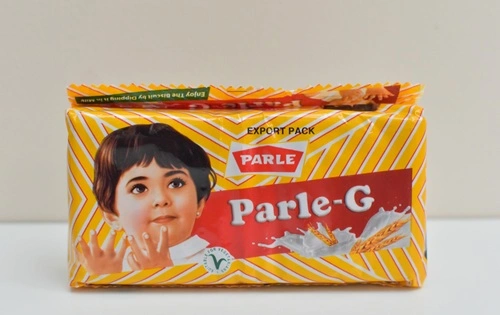Founded in 1929 in Mumbai, Parle Products commands iconic status in India’s FMCG landscape. Its flagship glucose biscuit, Parle‑G, remains the world’s best‑selling biscuit, while brands like Hide & Seek, Monaco, 20‑20 Cookies, and confectionery lines drive diversification. With over 130 factories and a distribution network reaching ~6 million retail outlets, Parle Products is deeply embedded in both urban and rural India.

Strengths
1. Unmatched brand equity & trust: Parle‑G has been consistently ranked among India’s most trusted brands, embodying simplicity and reliability.
2. Aggressive pricing & affordability: With packets priced as low as ₹2–5, the brand remains accessible to lower-income consumers, maintaining mass-market penetration.
3. Extensive rural and urban reach: Deep rural penetration underpins Parle‑G’s stickiness in smaller towns, while urban demand supports premium lines like Hide & Seek and Milano.
4. Robust supply chain: A network of 130+ manufacturing units and efficient logistics enables wide availability and economies of scale.
5. Diversified product portfolio: Alongside glucose biscuits, Parle offers a broad range: cookies, wafers, snacks, and candies, with the latter now contributing ~25% of revenue.
Weaknesses
1. Heavy reliance on Parle‑G: Despite diversification, Parle‑G accounts for ~75% of revenue, leaving the company vulnerable if preference shifts.
2. Limited premium innovation: The brand’s heritage of consistency results in slow innovation, especially in premium biscuits, snacks, and flavor profiles.
3. Under-spend on modern marketing: Parle lags peers in digital advertising and influencer campaigns, relying heavily on traditional awareness channels.
4. Regional competition and taste fatigue: In some regions, niche or bakery products rival its market share, and some consumers view Parle‑G as stale, impacting appeal.
Opportunities
1. Health-focused product expansion: Launching multigrain, low-sugar or fortified biscuits aligns with global healthy snacking trends and growing nutritional awareness .
2. Export market growth: Parle‑G is already present in SAARC, Middle East, the US, UK, Europe, and Africa — further scaling export channels would diversify revenue.
3. Premium and segment expansion: Investing in R&D to produce premium cookies, breakfast cereals, or ‘gourmet’ lines can capture higher margin consumers .
4. Digital engagement & e-commerce: Boosting digital marketing, direct‑to‑consumer platforms, and social media campaigns can elevate brand salience among millennials.
5. Institutional tie-ups: Partnerships with schools, hospitality chains, and FMCG distribution platforms could enhance market presence and volume sales.
Threats
1. Intense competition: Rivals like Britannia, ITC, Mondelez, and regional brands offer robust product portfolios and aggressive distribution.
2. Rising raw material & logistics costs: Commodity inflation for wheat, sugar, and oil, along with fuel price volatility, pressurizes margins, especially with limited pricing flexibility.
3. Changing consumer preferences: Growing health awareness may reduce demand for high‑sugar snacks, threatening the core glucose‑biscuit business.
4. Regulatory and packaging shifts: New packaging norms (plastic reduction) or labeling mandates could increase operational costs and require product redesigns .
5. Brand fatigue and maturity: Parle‑G’s market saturation may make it prone to brand fatigue unless re‑energized through innovation or repositioning.
Future Outlook
Heading into FY 2026–28, Parle stands at a pivotal juncture—combining legacy strength with needed modernization:
Deepen premium portfolio: Invest in product innovation—multi-grain Parle‑G variants, premium cookies, breakfast cereals to diversify margins.
Aggressive rural + digital strategy: Deepen penetration in Tier‑3/4 regions with health & value lines, while expanding online reach and digital promotions.
Health-centric branding: Launch fortified and low-sugar products aligned with changing dietary preferences and regulatory incentives.
Expand export rooms: Enhance manufacturing for export, optimize packaging for global compliance, focusing on the Middle East, Africa, and SEA.
Strengthen marketing: Elevate brand appeal via influencer partnerships, nostalgia campaigns, and targeted digital ads; build festival-season activations.
Cost & supply chain resilience: Hedge commodity prices, streamline supply management, and build pricing flexibility into P&L.
Sustain CSR and innovation: Maintain a strong CSR profile, utilize brand legacy to support rural nutrition programs, increasing societal goodwill.
If Parle successfully modernizes its product portfolio, balances rural scale with urban sophistication, and accelerates global and health‑oriented expansion—while protecting its iconic brand—it is poised to sustain 5–7% revenue CAGR and protect margins, retaining its status as India’s most trusted biscuit maker into the next decade.